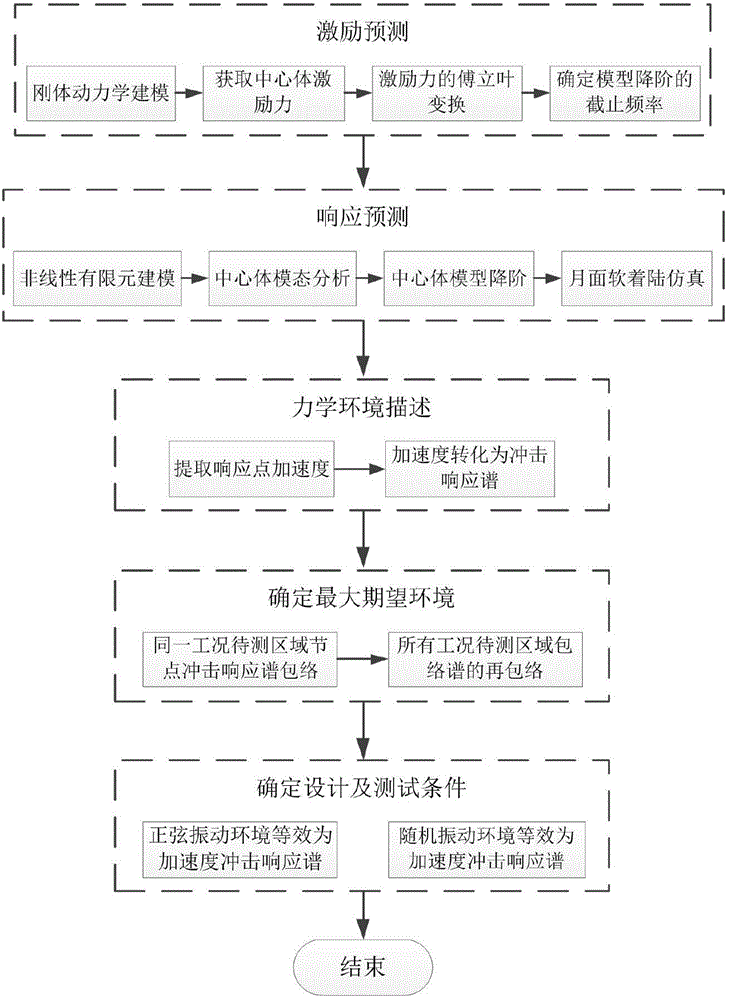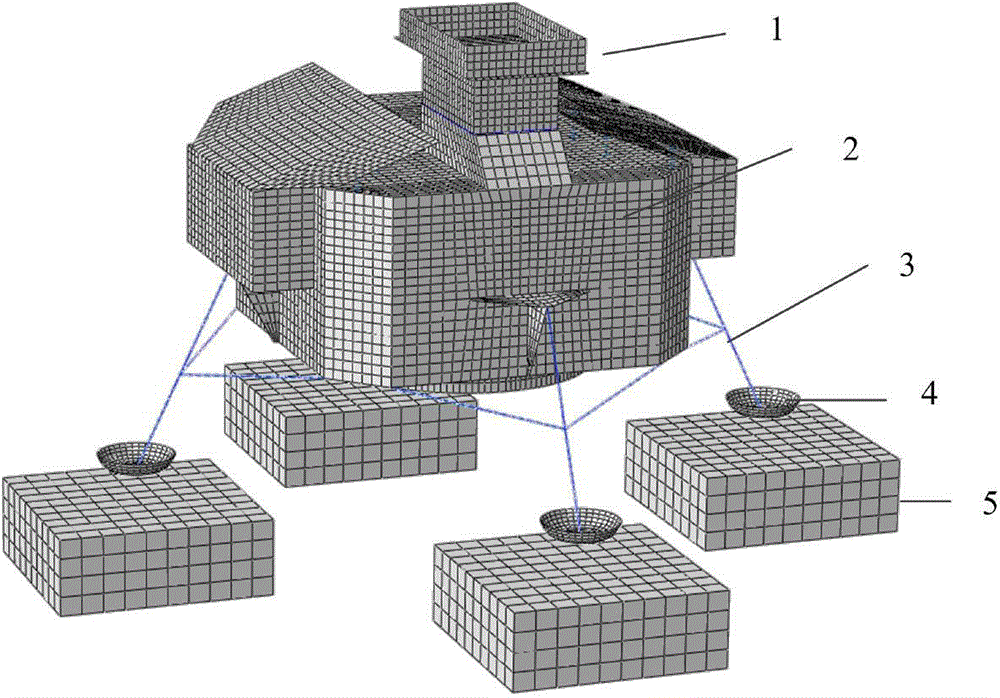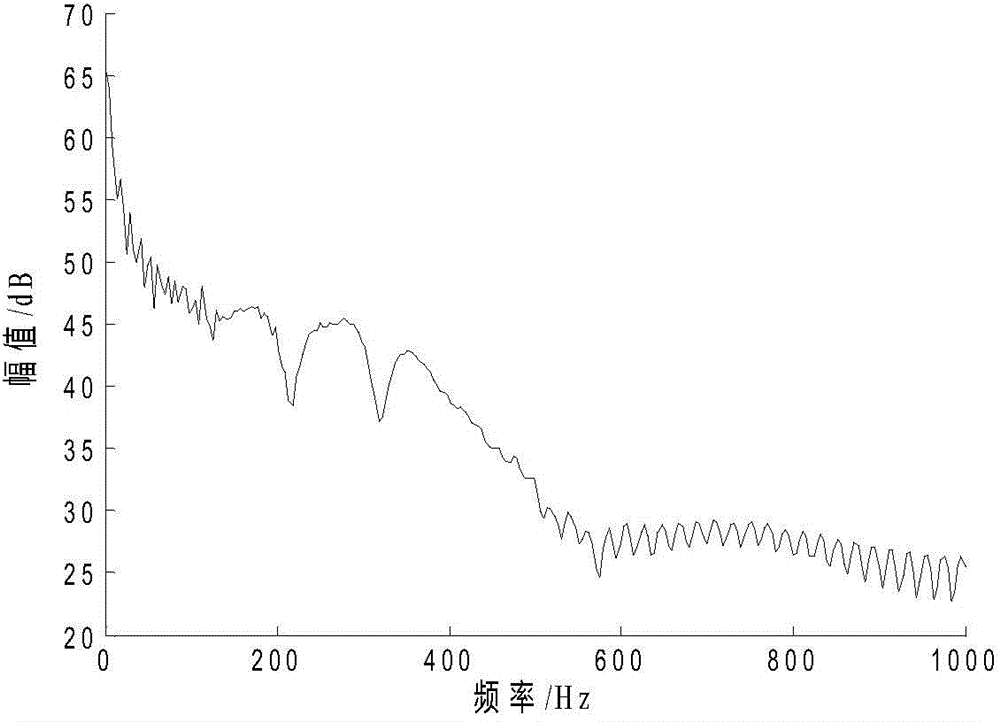Mechanical environment prediction method of lunar probe soft landing impact
An impact mechanics and detector technology, applied in the field of deep space exploration, can solve problems such as the inability to truly respond to the impact response of the detector payload, and achieve the effects of shortening product design cycles, saving design costs, and improving solution efficiency.
- Summary
- Abstract
- Description
- Claims
- Application Information
AI Technical Summary
Problems solved by technology
Method used
Image
Examples
Embodiment Construction
[0031] Take the central body top plate (the finite element model of the detector structure see figure 2 ) as an example, formulate its impact mechanics environment design and test conditions.
[0032] Step 1: Excitation prediction, select an appropriate method to predict the dynamic response of the structure according to the characteristics of the excitation.
[0033] For the lunar soft landing probe, due to the limiting effect of the landing buffer, the excitation energy acting on the main structure of the probe base is mainly concentrated in the low frequency band, so the dynamic response of the main structure of the probe is also concentrated in the low frequency band. According to NASA In the manual "NASA-HDBK-7005", the finite element method can be used to predict the response, that is, the soft landing dynamic response of the probe is a low-frequency transient dynamic problem.
[0034] Step 1.1: Establish a rigid body dynamics model for the soft landing of the lunar pr...
PUM
 Login to View More
Login to View More Abstract
Description
Claims
Application Information
 Login to View More
Login to View More - R&D
- Intellectual Property
- Life Sciences
- Materials
- Tech Scout
- Unparalleled Data Quality
- Higher Quality Content
- 60% Fewer Hallucinations
Browse by: Latest US Patents, China's latest patents, Technical Efficacy Thesaurus, Application Domain, Technology Topic, Popular Technical Reports.
© 2025 PatSnap. All rights reserved.Legal|Privacy policy|Modern Slavery Act Transparency Statement|Sitemap|About US| Contact US: help@patsnap.com



